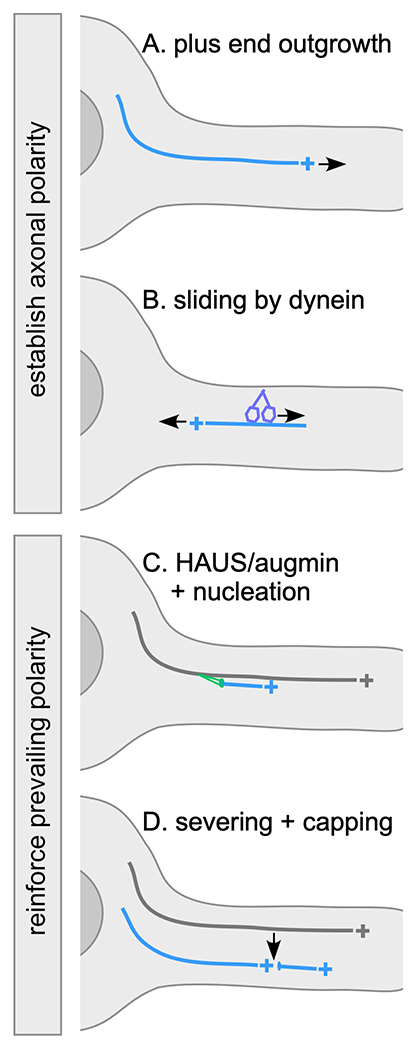Figure 1.

Axonal polarity control mechanisms
In all diagrams the cell body is at the left and axon is shown extending to the right. The microtubule of interest is shown in blue with plus end indicated. Older or template microtubules are shown in grey. A. Dynamic plus ends can grow out from the cell body into the axon during development and in mature neurons. Rapid plus end growth can help populate axons with plus-end-out microtubules. B. Dynein anchored to the cell cortex can slide mis-oriented microtubules out of the axon by walking towards their minus end. Plus end growth and dynein-mediated removal of microtubules can help establish initial polarity, and can also help maintain polarity over the long-term. C. The HAUS/augmin complex can recruit the gamm-tubulin ring complex to the side of existing microtubules and favors nucleation in parallel to the template. D. A microtubule severing event can generate two new correctly oriented microtubules from a parent microtubule. Minus ends are typically recognized by capping proteins including CAMSAPs when they are generated. Both severing and templated nucleation help maintain microtubule polarity by making new microtubules based on the polarity of pre-existing microtubules.
